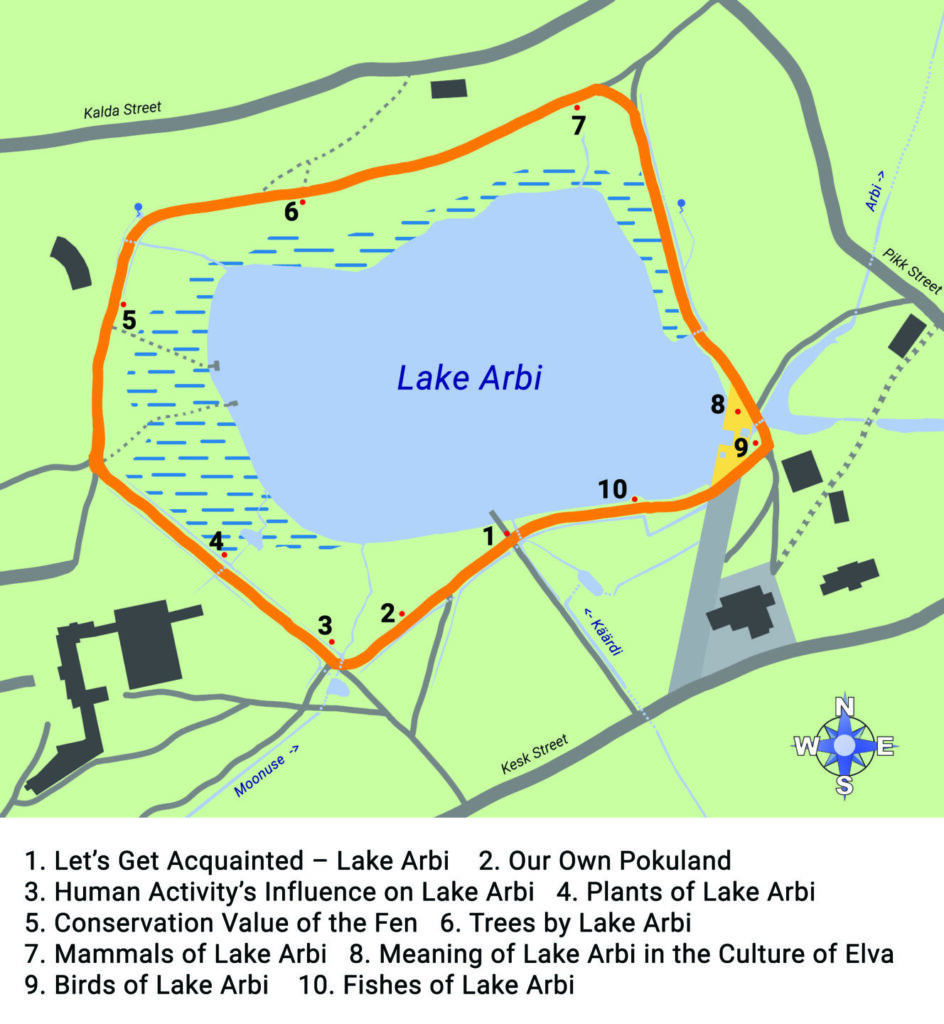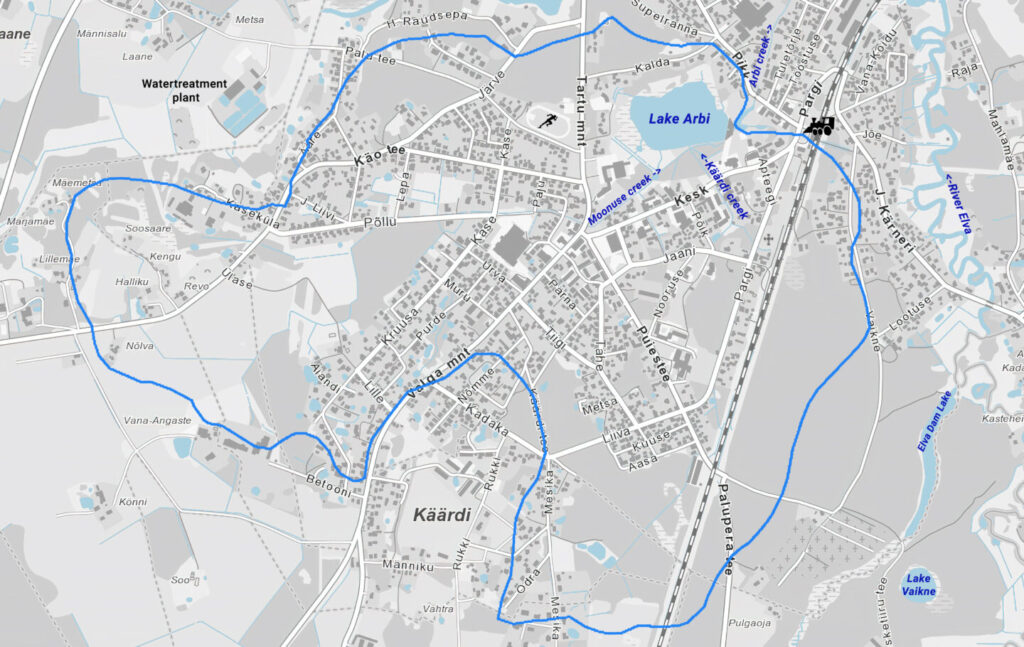Located in the heart of Elva, with its beautiful views, rich vegetation and the surrounding pine forest, Lake Arbi offers activities for both the young and the old. The shady path along the lake is perfect for walking, sporting activities or just relaxing. The same path has also been used in educational activities – both kindergarten children and other school students can observe the change of seasons, listen to the frog concerts in the spring, watch the birds and get to know the trees and other plants.
Over the years, many nature lovers, kindergarten and other school teachers of Elva have wanted to create a nature trail marked with information boards to introduce the biodiversity around the lake and the natural values of the protected Elva-Peedu forest park. Lake Arbi Nature Trail has in total of ten information boards and stands, the locations of which can be found on the attached map.

Locations of information boards and stands on Lake Arbi Nature Trail.
Designer: Piret Vutt.
Geology and Hydrology of Lake Arbi
The varied landscape of the town of Elva and its surroundings have largely developed as a result of the last Ice Age activities. Lake Arbi is a legacy from the retreat of the continental ice, it is located on the southern edge of the Vellavere Upland, situated 42.5 m above sea level and covering an area of 6.5 ha. The water volume in the lake is about 240,000 m3 and the average depth is 4.2 m. The size of the lake`s catchment area is almost 3 km2, covering the western and southern parts of the town and most of the town center. Due to the densely populated area, the existence of a common sewage system in the lake, the catchment area is necessary to ensure the good condition of the lake.

For decades, the lake was affected by wastewater discharged through ditches, which promoted the development and overgrowth of aquatic vegetation. In 2009 a large lake restoration took place, which was the first of its kind in Estonia in terms of the technology used. The aim of the project was to improve the ecological conditions and environmental value of the lake. Hydrologists consider this project successful because the condition of the lake has improved significantly.
Biota connected to Lake Arbi
At the edges of the lake a special habitat – the lowland bog and fen, characterized by typical vegetation – the common reed (northern part of the lake), marsh-marigold, meadowsweet, buttercups can be found. In the lake you can see the yellow water lily, the white water lily and the white dwarf water lily. Elva’s own small Pokuland also exists by the lake – the Pokus are mainly made up of the Lesser tufted sedge, but a total of six different species of sedges have been found by the lake, but not all of them form tufts.
The richness of the nutrients and the purity of the water is indicated by the lake´s biota of invertebrates (various species of shellfish and snails), but also by the abundance of fish and amphibians (mainly the common frog, the moor frog and common toads). From the conservational point of view, the landscape around Lake Arbi is important for preserving the habitat of fen species; an endangered plant species – the marsh saxifrage, and the Geyer`s whorl snail also live on the shores of the lake.
The attentive observer has certainly already noticed that the views around Lake Arbi are characterized by the forest coverage not typical of an urban environment: the Scotch pines, birches and black alders. The pines are especially important to us: Elva has always been known as Männilinn (Town of Pines). The trees growing on the shores of the lake are important to the birds. However, there are relatively few waterfowl species here. The mallards stay for the winter. In summer, great crested crebes and common goldeneyes also nest here.
Among the mammals, the Eurasian beaver has been seen cutting down trees and building lodges on the north shore of the lake. Also, another semi-aquatic mammal, the European water vole has been seen. The shore of the lake is an important feeding ground for weasels: the short-tailed stoat and the European pine marten and the beech marten. Bats are exciting: the lake’s water attracts insects, that bats feed on. Thus, Lake Arbi is interesting for nature observers even on white summer nights!
Main photo: Ragnar Vutt
